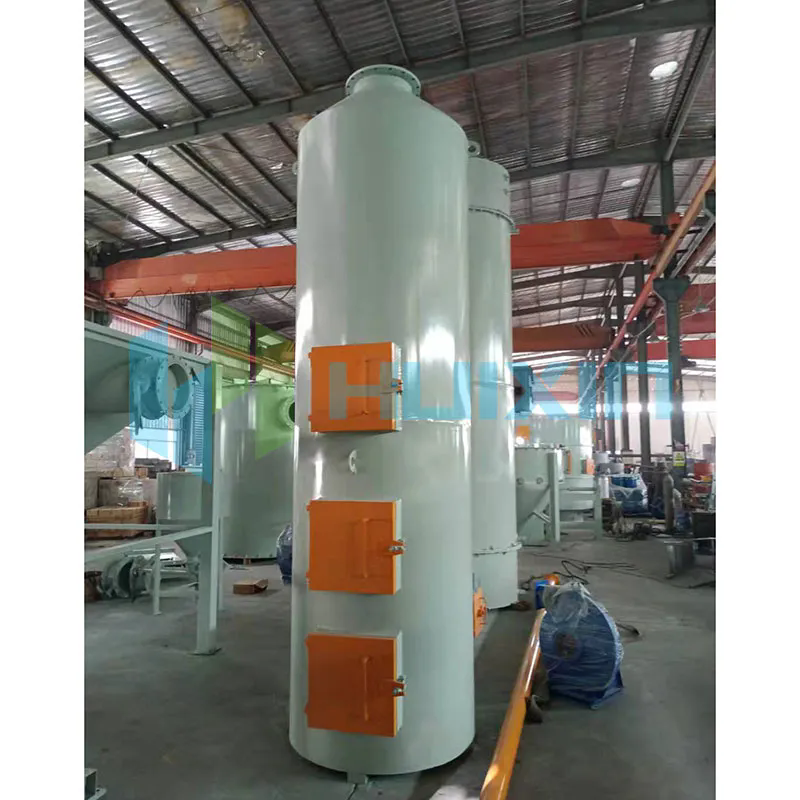Detailed Overview of Smoke Treatment Machinery
2024-07-30
Smoke treatment machinery is essential for controlling and reducing emissions from industrial processes. These systems are designed to remove harmful pollutants and particulates from smoke before it is released into the atmosphere, thereby helping to meet environmental regulations and protect public health.
Key Features of Smoke Treatment Machinery:
1. Filtration Systems:
- Electrostatic Precipitators (ESP): Uses electrical charges to attract and capture particles from the smoke.
- Baghouse Filters: Utilizes fabric filter bags to capture particulates as the smoke passes through.
- HEPA Filters: High-Efficiency Particulate Air filters that capture very fine particles.
2. Scrubbers:
- Wet Scrubbers: Use liquid (usually water) to remove particulates and gases from the smoke. The contaminants are collected in the liquid and separated from the air.
- Dry Scrubbers: Use dry reagents or materials to neutralize or absorb pollutants.
3. Catalytic Converters:
- Oxidation Catalysts: Convert carbon monoxide (CO) and hydrocarbons (HC) into carbon dioxide (CO2) and water (H2O).
- Selective Catalytic Reduction (SCR): Reduces nitrogen oxides (NOx) emissions by converting them into nitrogen (N2) and water (H2O) using a catalyst and a reducing agent, such as ammonia or urea.
4. Adsorption Systems:
- Activated Carbon Filters: Use activated carbon to adsorb volatile organic compounds (VOCs) and other gases from the smoke.
- Zeolite Filters: Utilize zeolite minerals to capture and hold various pollutants.
5. Thermal Oxidizers:
- Direct Flame Incinerators: Burn off harmful pollutants in the smoke at high temperatures.
- Regenerative Thermal Oxidizers (RTO): Use a bed of ceramic media to capture and recycle heat, making the process more energy-efficient.
6. Cyclone Separators:
- Cyclonic Action: Uses a high-speed rotating airflow to separate particulates from the smoke by centrifugal force.
7. Mist Eliminators:
- Demisters: Remove liquid droplets from the smoke using coalescing elements or mesh pads.
Benefits:
1. Environmental Compliance: Helps industries meet local, national, and international emission standards.
2. Health Protection: Reduces the release of harmful pollutants that can affect public health.
3. Operational Efficiency: Many systems are designed to be energy-efficient, reducing overall operational costs.
4. Versatility: Suitable for a wide range of industries, including manufacturing, power generation, waste management, and more.
Considerations:
1. Initial Investment: High initial costs for equipment and installation.
2. Maintenance: Regular maintenance is necessary to ensure optimal performance and longevity of the machinery.
3. Customization: Systems often need to be tailored to specific industrial processes and types of emissions.
4. Energy Consumption: Some systems can be energy-intensive, although newer technologies are increasingly energy-efficient.
Applications:
- Power Plants: Reducing emissions from burning fossil fuels.
- Manufacturing Industries: Controlling smoke and pollutants from various manufacturing processes.
- Waste Incineration: Treating emissions from waste-to-energy plants and incinerators.
- Chemical Plants: Managing emissions from chemical production and processing.
Investing in smoke treatment machinery is crucial for industries aiming to reduce their environmental impact and comply with regulatory standards while protecting the health of their workers and surrounding communities.



